“OA provides a wonderful opportunity for individuals and institutions to better understand what’s going on in all parts of the world. It is our hope that through OA, there will be less duplication of research, meaning we save precious research resources for the truly noble ideas.” – Professor Khor Nanyang Technological University (NTU), Singapore
The research landscape is changing rapidly: Open Access (OA) publications have surpassed subscription-only publications, while over 10% of global research output in the past five years was related to the UN Sustainable Development Goals (SDGs). The advantages of OA are clear, yet more needs to be done to understand how communities are engaging with this content and to ensure that diverse voices are reflected and represented in the field.
As we move further towards an OA future, it’s vital that publishers, institutions and researchers come together to produce relevant and impactful work that drives forward innovation and addresses society-wide challenges.
We spoke to Professor Michael Khor and Dr. Alana M. Soehartono of Nanyang Technological University (NTU), Singapore to hear what this leading university is doing to understand and address these new priorities.
Tell us more about how you’ve been using Dimensions to explore trends in Open Access (OA) publishing.
MK: There has been a huge shift to OA publication models in recent years. We wanted to delve into this further and get a comprehensive view of OA in Asia-Pacific (APAC) and Southeast (SE) Asia. First, we tracked the number of closed and open access articles published in the APAC region over the past few decades. This initial analysis uncovered exponential growth in OA publishing; in fact, in 2020 the share of articles openly published overtook those published under the traditional closed access model.
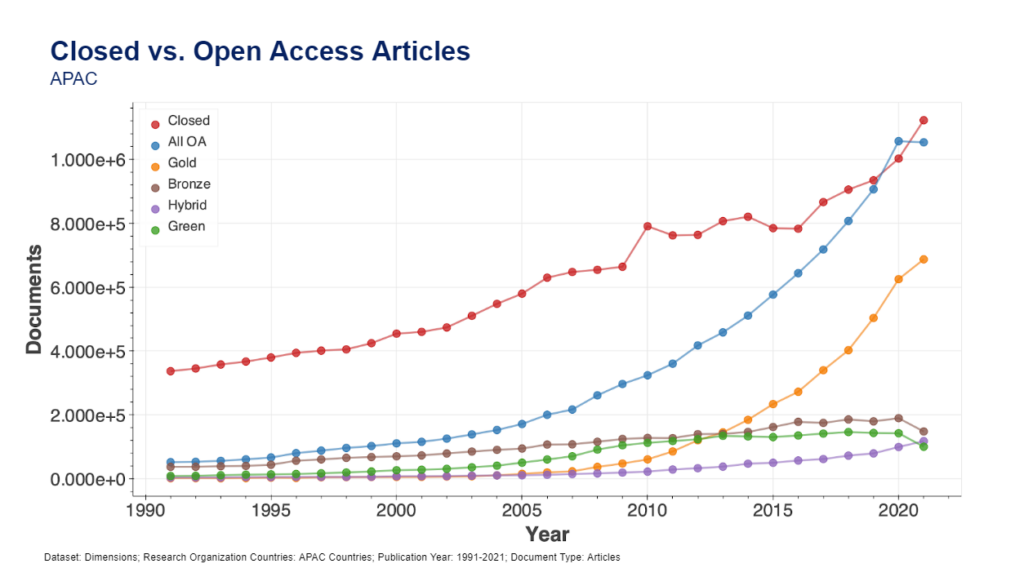
AS: We then scrutinized the data to gain a more nuanced understanding of these publishing trends. Analysis of the five countries with the highest overall research output from 2017 to 2021 revealed that the ratio of closed to open access articles being published is somewhat comparable. There has been great uptake of OA in these leading research countries, particularly in the United States and Canada.
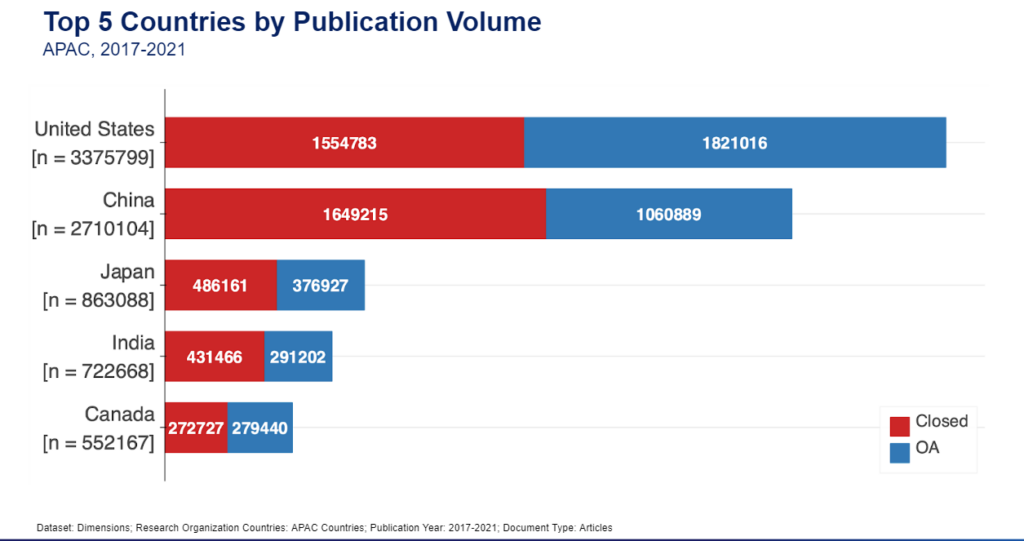
Meanwhile in SE Asia the volume of OA articles has long overtaken those published in closed journals.
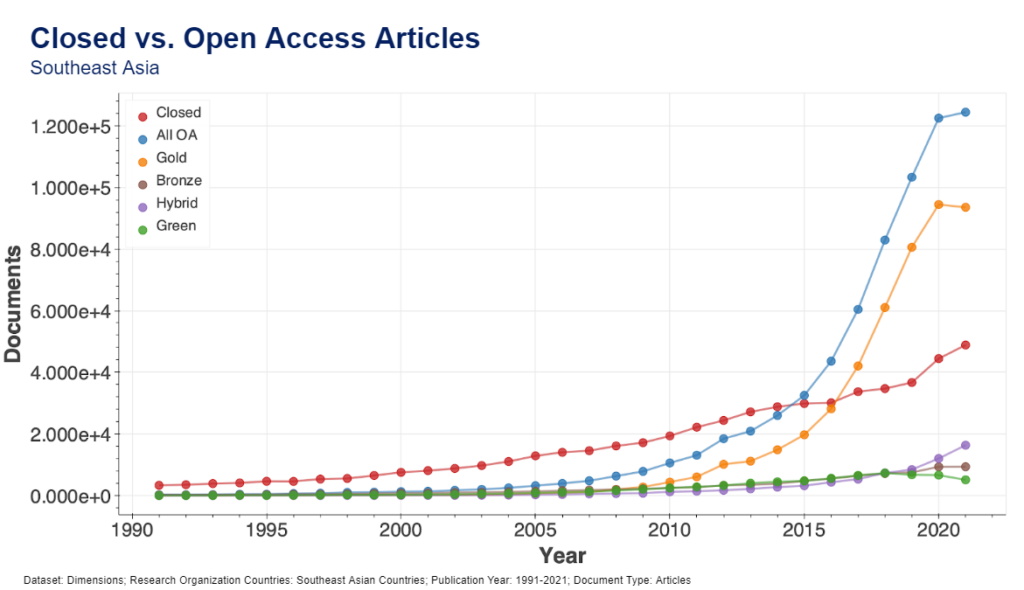
Indonesia is by far the leading country in terms of publication quantity and is driving the growth of OA in this region.
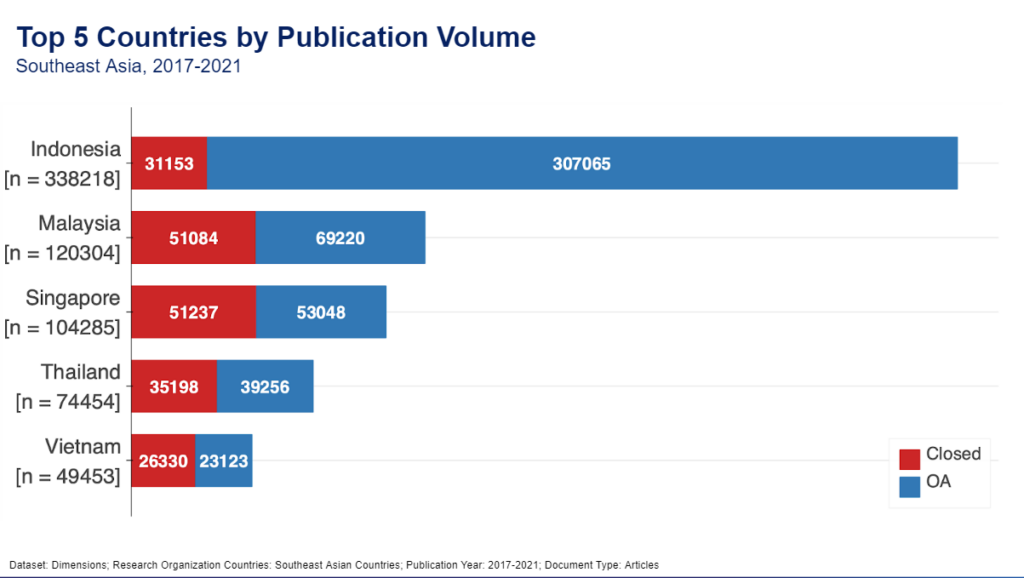
What do you think is driving this growth?
MK: OA allows many more people across the globe to access research by removing economic barriers. It’s also critical in giving scientists and researchers a greater opportunity to build upon each other’s work. This model provides a wonderful opportunity for individuals and institutions to better understand what’s going on in all parts of the world. It is our hope that through OA publishing, there will be less duplication of research, meaning we save precious research resources for the truly noble ideas.
Are there challenges for academics looking to publish in OA and for institutions supporting these academics?
AS: Definitely. Even though one might have strong publishing activity, it also matters where you’re publishing. The impact of a journal is often measured by the number of citations related to published articles. Many OA articles in SE Asia are published in national journals, which means they won’t gain the visibility that is the premise for OA. This raises some questions around the perceived benefits of OA research.
We examined average citations per paper across the top five countries by publication volume in APAC and then the top five countries by publication volume in SE Asia. Given the rise in OA, the number of closed average citations a country has should be indicative of average OA citations. Yet we found this wasn’t always the case; Indonesia is a clear example of this.
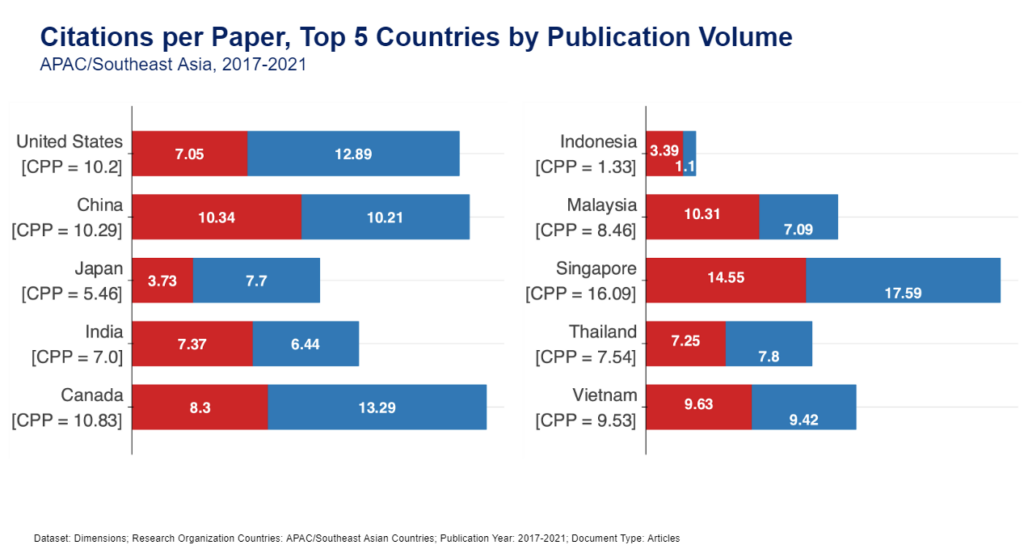
We sampled the data further, looking at source titles. A comparison of titles in the United States versus Indonesia showed us that a lot of non-English titles are the most frequent publication sources in Indonesia. They’re in the local language, which wouldn’t be as accessible on an international level; whereas in the US, there are many more multidisciplinary journals, as well as more medical journals.
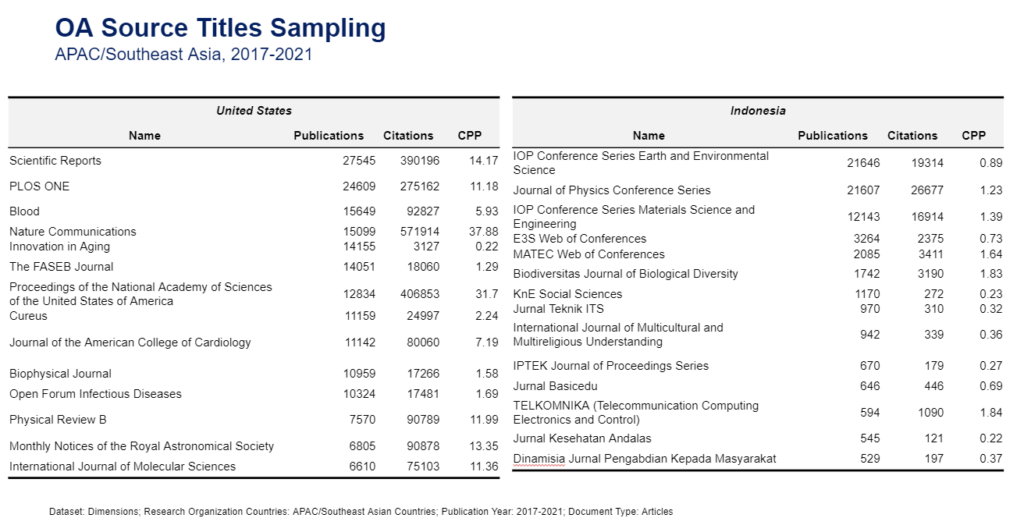
What does this mean for academic researchers and institutions?
MK: Whether an article is closed or open, it’s important to consider the quality of the work and the community who will read it. This is a complex issue and our findings contain very important messages for the research community across APAC and SE Asia. If an article is OA, that doesn’t necessarily mean more people will read it or that it will receive more citations. For this to happen, it needs a wider appeal – enough for others to want to cite that piece of work.
You could think of it like this: imagine that an OA article is a 24-hour shop. If you open your shop for 24 hours every day, perhaps you will get more customers. This is probably true for a larger brand like Macy’s or Coles. But who knows if it’ll work for someone smaller? Despite being open for 24 hours, seven days a week, you may not get more customers, and your revenue may not rise. In fact, you may have a lower revenue, because you spend more on energy or staff salary. The same goes for the journal articles. Despite being open, do you have more citations?
How can research communities determine the quality of a research article beyond citations?
MK: Citations are important, but they’re not the ultimate measure of quality. We all understand the importance of good medical research to go from ‘bench to bedside’. The same applies to most other disciplines. Research needs to be practically applied to have a positive societal impact. As an example of this, technological research eventually must be translated to useful devices and solutions that will benefit quality of life for communities.
At NTU, we don’t stop at citations. While they are a key indicator of quality research, they’re not the only one. We’re consciously moving beyond citations by looking into the translational aspect of our research: whether it has been taken up and by whom, linking with industry and business through local and international research networks.
How do we address the language bias of scientific research?
AS: It’s clear that more needs to be done to raise the visibility of non-English language research and to ensure that OA truly serves its purpose: research becoming more easily discoverable.
MK: As researchers ourselves, we see many opportunities for further investigation on the trends and tendencies of different countries across the globe. It’s certainly not one size fits all. Like Alana says, there needs to be more thinking around how we can promote research carried out in other parts of the world. SE Asian countries are some of the fastest-rising producers of scientific research and those communities will only continue to grow. It’s important we watch these developments closely. I believe that, used effectively, OA could be a very important factor for the development of research in SE Asia – and APAC too.
You mentioned that high income countries are at an advantage in terms of research output and opportunities to publish. How can we create a more equitable research culture?
AS: As we’ve touched upon, this requires a fundamental change in how we think about and measure research. Research published in national journals offers contextual knowledge which serves the needs of local communities and there is huge value in that.
In addition, more needs to be done to remove any economic barriers. OA maximizes the availability and usability of publications, but at the same time it excludes many researchers from publishing in those journals. Encouraging collaboration and taking an interdisciplinary approach is a good starting point, as well as publishers offering waivers and discounts to researchers from low-income countries. This equalizes opportunities for them to publish in OA.
Advancing the UN SDGs relies heavily on interdisciplinary working. With NTU’s strengths in the hard sciences, are you also connecting and measuring the impact of social sciences research?
MK: This is exactly the development and direction that NTU is taking. We recently established the NTU Institute for Science and Technology for Humanity (NISTH), a collective of researchers, students, industry professionals, policy makers, and members from civil society. They are integrating STEM and non-STEM expertise and methods to address the critical needs and challenges of the 21st century.
NTU has also launched the Accelerating Creativity and Excellence (ACE) Programme. The ambition of ACE is to catalyse bold and unconventional cross-disciplinary research across colleges, ensuring we continue to produce compelling, relevant knowledge that can respond to, and perhaps even drive, new global trends.
How else is NTU incorporating the SDGs in the context of its research focus?
MK: We have developed NTU 2025, a five-year strategic plan to address global challenges like climate change, emerging health threats and an ageing population. We have six areas of focus that overlap with the SDGs: Artificial and Augmented Intelligence; Resilient Urbanisation & Natural Ecosystems; Brain & Learning; Health and Society; Future of Industry and Culture, Organisations and Society.
AS: Dimensions offers rich data-driven insights and contextual information about our work. The platform allows us to quickly assess if our research activity is driving progress towards relevant SDGs, as well as identify emerging areas of research and identify potential collaborators. As an example, we have partnered with the Alliance to End Plastic Waste (AEPW) and together will co-fund innovative research projects that create value out of plastic waste.
How does your work compare to that of the wider research ecosystem?
AS: Analyzing research output related to the SDGs across APAC countries, we have found that their general focus for the past five years more or less mirrors our own.
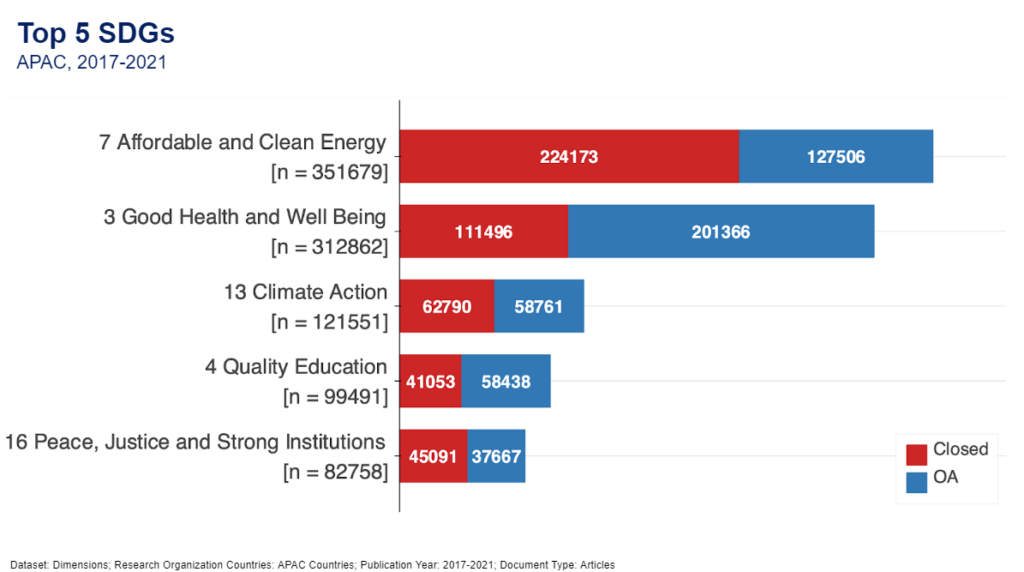
It’s no surprise that affordable and clean energy is the top priority: it’s a critical necessity which drives development and will help us combat the climate crisis. Climate change ranked third for NTU and for the APAC region. With many countries already experiencing the effects, research and science-based solutions are vital.
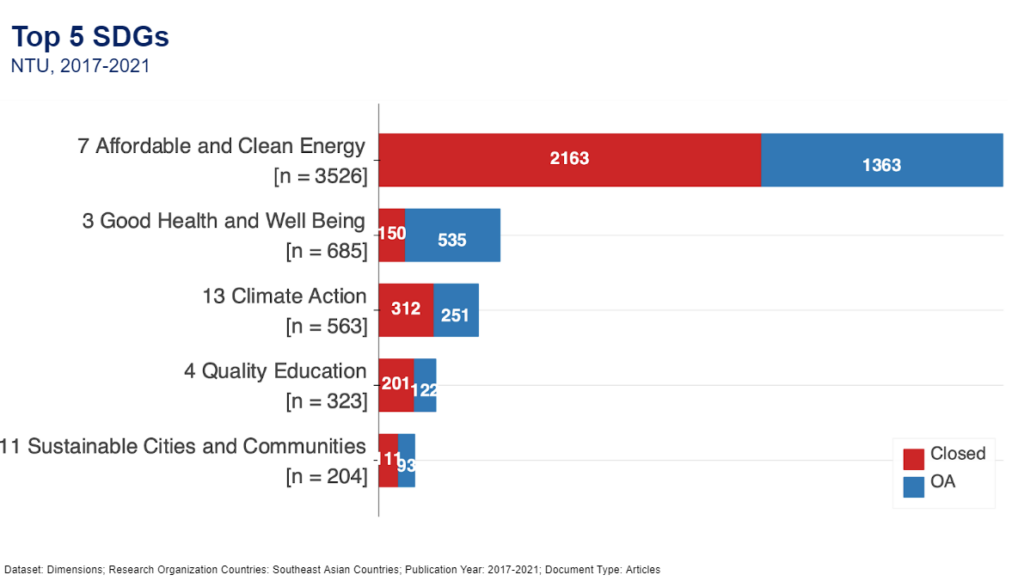
MK: Looking at SE Asia, the focus is a little different. Affordable and clean energy still ranks high, but quality education is the priority. Much of this relates to Indonesia’s publishing activity. Moving forward, many more SDGs will need to be addressed by research at this level. I expect clean water to be a top priority in the coming years, as well as sustainable cities. The cities of SE Asia are set to grow and more will be developed. As this happens, this SDG will emerge more strongly.
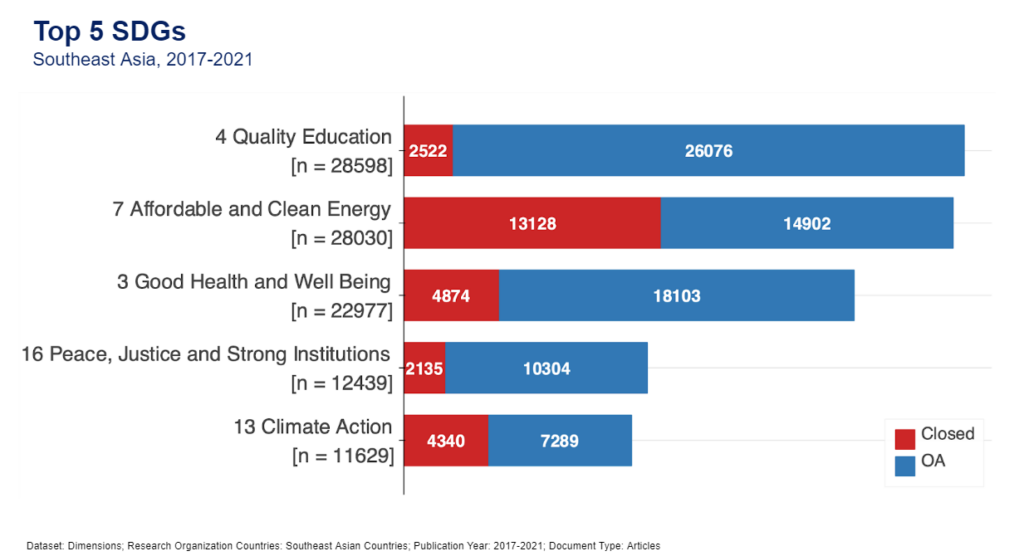
Dimensions is designed to support scientific research, enabling users to gain actionable insights into global research activity and trends. The Sustainable Development Goals (SDGs) is one of several classification systems found in Dimensions which enable discovery and analysis by SDG topic or in combination with keywords . Talk to us to find out more. And, if you missed our webinar on OA and Sustainable Development Research, you can watch it on demand here.
Sign up for news and updates from Dimensions
